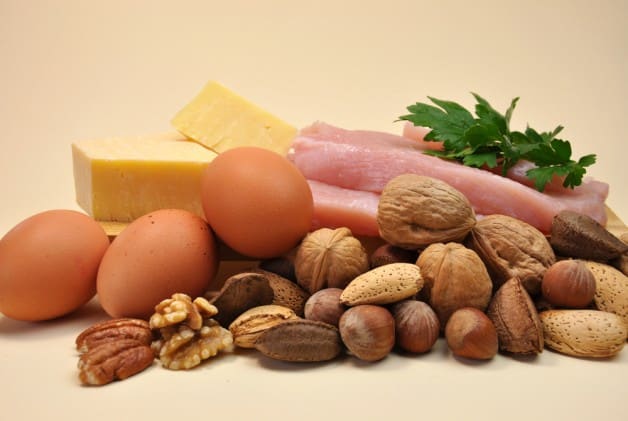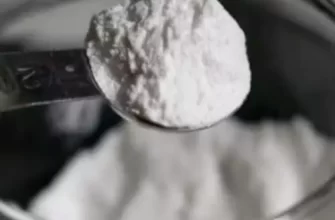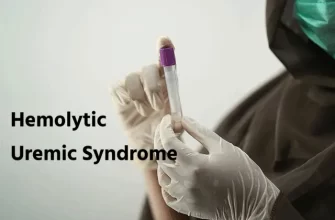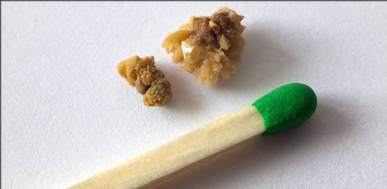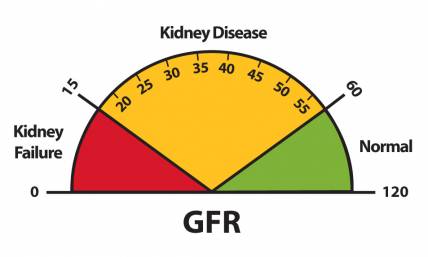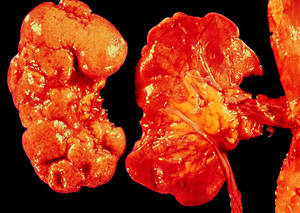Kidney stones are hard mineral deposits that form inside the kidneys when certain substances in urine become too concentrated. These stones can range from a grain of sand to several centimeters (or inches) in size. Common culprits include calcium oxalate, uric acid, and struvite. When hydration is insufficient or the balance of minerals and acids in the urine is disrupted, stones are more likely to form.
Increased Risk of Kidney Stones from Daily Soda
The chart illustrates the relative risk increase for developing kidney stones from daily soda consumption. Sugar‑sweetened colas are associated with a 23% higher risk, while non‑cola sweetened sodas show an even greater 33% increase. In contrast, artificially sweetened sodas show no significant correlation with kidney stone formation.
Interestingly, the prevalence of kidney stones in the U.S. has been steadily climbing. According to the National Kidney Foundation, about 1 in 10 Americans will experience a kidney stone at some point in their life. That’s roughly 10% of the population dealing with a condition that can be incredibly painful — and occasionally serious.
Is Soda a Real Villain When It Comes to Kidney Stones?
Here’s where things get fizzy. While not all sodas are created equal, many contain phosphoric acid, added sugars (especially high-fructose corn syrup), and caffeine — a trifecta of ingredients that may increase the risk of developing kidney stones.
Studies have shown that colas in particular, which are rich in phosphoric acid, can contribute to stone formation by lowering urinary citrate — a compound that helps prevent stones ⧉. In a large prospective study published in Clinical Journal of the American Society of Nephrology, men who consumed at least one soda per day had a 23% higher risk of developing kidney stones compared to those who didn’t ⧉.
Meanwhile, non-cola sodas (like clear citrus-flavored options) generally do not show the same risk profile. But they often come packed with sugars that can still raise the risk of stones by promoting obesity and insulin resistance, both of which are indirect stone-forming risk factors ⧉.
What Types of Sodas Are the Worst Offenders?
Among all soft drinks, dark-colored colas (both regular and diet) appear to be the worst for your kidneys. These beverages are high in ingredients that quietly sabotage your urinary system. Let’s break them down one by one:
- Phosphoric acid — This is commonly used in colas to add tartness and preserve shelf life. It increases the acidity of your urine, which creates the perfect environment for stone-forming minerals to clump together. You’ll find it mostly in dark sodas like Coca-Cola and Pepsi.
- Risk rating: 8/10
- Caffeine — While caffeine gives you that energy jolt, it’s also a mild diuretic. That means it increases urine output and can lead to dehydration — especially if you’re not drinking enough water. Less water in your body means more concentrated urine, which is more likely to form stones. Besides soda, caffeine is found in tea, energy drinks, and yes — coffee.
- Risk rating: 6.5/10
- High-fructose corn syrup (HFCS) — This sweetener is added to many regular sodas. It boosts levels of substances like calcium, oxalate, and uric acid in the urine — all key ingredients in kidney stone formation. HFCS is what gives sugary sodas their addictive sweetness.
- Risk rating: 9/10
For example, a 12 oz (355 mL) can of cola can contain up to 55 mg of caffeine and 39 grams (1.38 oz) of sugar — a combo that spells trouble when consumed regularly ⧉.
How Does Soda Affect the Body’s Chemistry?
Soda changes the chemistry of your urine in several unhelpful ways. The phosphoric acid in many colas makes urine more acidic, which encourages stone-forming minerals to clump together. At the same time, soda lowers levels of citrate — a natural chemical that normally helps prevent those clumps from forming.
To picture it simply: citrate is like soap that keeps grease from sticking to your dishes. Without it, the minerals in urine start sticking like glue. Add in the dehydrating effect of caffeine (which makes you urinate more without replacing lost fluids), and your urine becomes concentrated — another big win for stone formation.
Even diet sodas, though lower in sugar, still contain acids that contribute to this problem. So despite having fewer calories, they’re no free pass for your kidneys.
Real-Life Medical Cases in the U.S.
A 42-year-old man from Phoenix, AZ, who drank three colas daily for over a decade, ended up in the ER with severe flank pain. Imaging revealed multiple calcium oxalate stones. His urologist attributed it largely to his long-term cola habit — after reducing soda intake and increasing water, he remained stone-free for over two years.
Another case involved a 28-year-old woman from Charlotte, NC, who switched from soda to flavored sparkling water and experienced a dramatic drop in stone recurrence over the next 18 months. Her metabolic panel normalized, and she reported fewer urinary symptoms.
Diagnostic Tools for Kidney Stones
Diagnosing kidney stones isn’t a guessing game — modern tools are accurate, quick, and increasingly patient-friendly. Here’s a clearer breakdown of what you can expect:
CT Scan (Non-contrast Helical)
This is the gold standard for diagnosing kidney stones. You lie on a table that slides into a donut-shaped machine. It takes detailed cross-sectional images of your kidneys and urinary tract. No contrast dye is needed, and the scan takes just minutes.
- Best for: Accurate detection regardless of stone size or location
- Availability: Widely available at hospitals and imaging centers
- Radiation: Moderate
Ultrasound
Totally non-invasive and uses sound waves to generate images. A technician moves a handheld probe across your abdomen. No radiation is involved, making it ideal for pregnant women and children.
- Best for: Safer for sensitive groups
- Availability: Common in outpatient clinics
X-ray (KUB — Kidneys, Ureters, Bladder)
This is a basic X-ray that can detect large stones, but not all types are visible. You stand or lie flat as a quick image is taken of your lower torso.
- Best for: Follow-up or detecting large, dense stones
- Availability: Widely available and quick
Urinalysis & Blood Tests
These are not imaging tools, but they offer valuable insight. A urine test can detect blood, crystals, or signs of infection. Blood tests check kidney function and calcium or uric acid levels.
- Best for: Assessing underlying causes or risk factors
- Availability: Routine in all clinics
Comparison Table
| Diagnostic Method | Accuracy (1–10) | Average Cost (USD) |
|---|---|---|
| CT Scan (Non-contrast helical) | 9.5 | $500–$3,000 |
| Ultrasound | 7 | $200–$800 |
| X-ray (KUB) | 5 | $100–$500 |
| Urinalysis & Blood Tests | Supportive | $50–$300 |
Reyus Mammadli, medical consultant, recommends starting with a CT scan if symptoms are acute and progressing quickly.
Treatment Innovations Worth Noting
Efficacy of Treatment Methods (Stone Removal Rate %)
This chart presents the effectiveness of common kidney stone treatment procedures. ESWL (extracorporeal shock wave lithotripsy) shows an approximate 85% success rate. Both URS (ureteroscopy) and PCNL (percutaneous nephrolithotomy) demonstrate high efficacy with around 95% success in stone removal.
Extracorporeal Shock Wave Lithotripsy (ESWL)
This non-invasive method uses high-energy sound waves (yes, like mini targeted earthquakes) to break kidney stones into smaller pieces that can pass naturally with urine. You lie on a special cushion, and the machine targets the stone using imaging. There’s no cutting or surgery. Most patients feel mild discomfort — like a dull tapping sensation — and may go home the same day.
- Effectiveness: 8.5/10 for small to medium stones
- Best for: Stones under 2 cm (0.8 inches)
- Downtime: Minimal; most people return to normal activity within 24–48 hours
- Cost: $2,000–$5,000
Ureteroscopy with Laser Lithotripsy
This method involves threading a thin scope through the urethra and bladder up to the ureter (the tube connecting kidney to bladder). A laser fiber is used to break up the stone, and fragments are either left to pass naturally or removed with a tiny basket. It sounds intense, but it’s highly targeted and precise.
- Effectiveness: 9/10
- Best for: Stones located in the ureter or kidney
- Downtime: Mild soreness and temporary stent placement; back to normal within a few days
- Cost: $3,000–$10,000
Percutaneous Nephrolithotomy (PCNL)
Reserved for the big, stubborn ones. PCNL involves making a small incision in the back to insert instruments directly into the kidney. Surgeons break the stone and suction it out — think of it like a mini vacuum for your kidneys. It’s done under general anesthesia, and usually requires a short hospital stay.
- Effectiveness: 9.5/10 for large stones
- Best for: Stones over 2 cm (0.8 inches) or multiple clustered stones
- Downtime: About 1 week of recovery; temporary catheter and follow-up imaging
- Cost: $5,000–$15,000
Reyus Mammadli notes that advanced laser systems like MOSES 2.0 have made these procedures faster, with fewer side effects and improved patient comfort.
Preventive Tips That Actually Work
If you’re serious about stone prevention, hydration is king. Aim for at least 2.5–3 liters (84–101 oz) of fluid per day. And yes, water is your MVP here. Citrus juices like lemonade or orange juice can help, too, due to their citrate content.
Here are some stone-stopping strategies:
- Limit soda to occasional indulgences — Try treating soda like dessert. Limit it to once or twice a week, and stick to smaller cans or bottles. Water or unsweetened iced tea can be your go-to instead.
- Reduce sodium intake (<2,300 mg/day) — Most Americans consume way more salt than needed. Start by reading labels and cutting back on salty snacks, processed meats, and canned soups. Opt for fresh herbs or lemon juice for seasoning.
- Moderate animal protein — Red meat, poultry, and eggs can increase stone-forming substances like uric acid. Stick to about 5–6 ounces (140–170 grams) per day — roughly the size of a deck of cards — and swap in plant proteins like lentils or tofu a few times a week.
- Eat more calcium-rich foods (not supplements) — It might sound odd, but dietary calcium actually helps prevent stones. Go for dairy products like milk, yogurt, and cheese. Just skip high-dose supplements unless your doctor says otherwise.
- Exercise regularly to maintain a healthy BMI — Even moderate activity like brisk walking for 30 minutes a day can help manage weight and improve metabolic health — both important for preventing stones.
According to a 2024 review in Mayo Clinic Proceedings, lifestyle changes alone reduced stone recurrence by up to 60% ⧉.
Editorial Advice
While it’s tempting to reach for that icy soda, the science clearly shows a link between certain sodas — especially colas — and kidney stone formation. It’s not about total abstinence, but about awareness and moderation.
Reyus Mammadli, medical consultant, recommends prioritizing hydration and choosing beverages that support renal health. He also stresses that not all sodas are equally harmful, but when in doubt, “water always wins.”
Increase in Kidney Stone Prevalence Over Time in U.S.
This chart highlights the rising prevalence of kidney stones in the U.S. population over time. In the late 1970s, the rate was only 3.8%. By the late 2000s, it more than doubled to 8.8%, and continued to rise to 10% by 2013–14, indicating a growing public health concern.
Making smarter choices today — like switching from soda to a water bottle with a splash of lemon — might just save you a painful ER visit tomorrow.
And let’s be honest: your kidneys will thank you.


